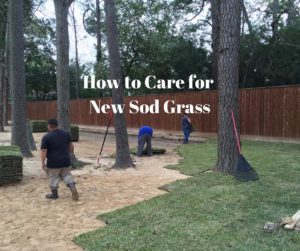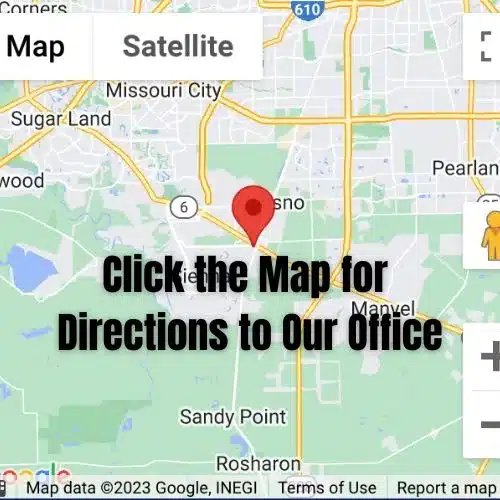How to Care for New Sod Grass in the Houston Area
“How to care for new sod” is a common question from our customers. You’ve invested in new sod for a new lawn, and you want to care for it properly. Houston Grass Owner Michael Romine answers that question in this video. Call us with questions at 281-431-7441.
Summary of How to Care for New Sod Grass
– How to care for new sod. I do a lot of the deliveries for us, and I get that question a lot. We also get that question a lot on the phone. Most of the time, we refer people to our website for a detailed explanation of the grass and the care. And we have it broken down into whether or not we’re talking about new grass that we’ve just installed, or we’re talking about grass that’s established and it has been there for a year plus. Then we also have it broken down into different times of year, because all those things change, the answer to that question.

But if I was talking about how to care for new sod, I would say, “Okay, we’ve got all our grass laid. Now what?” I would say that the most important thing and the most critical thing, especially if we’re talking about doing this in late spring, any time of summer, even late fall when it’s still fairly hot outside, the most important thing is water. You really have to water.
First Rule to Care for New Sod — Water It
It depends on whether, as far as how long, depending on if we’re talking about an irrigation system, whether you have a sprinkler system, or if we’re talking about watering it with a hose. But I can tell you from experience that with watering with a hose, the first couple of days, I recommend about 8 or 10 hours. What we say is you need to apply 2 inches of water to an area. And just roughly, usually with city water pressure, it takes about four hours to put out one inch of water on an area.
It is very critical that you make sure every single piece of grass receives that much water. Any piece along the edge that doesn’t, the grass won’t make it. One of the main things you’re doing is trying to help it. The grass is in shock. We’ve just ripped it out of the ground, threw it on a pallet, and it travels over the road. And then you lay it down out in the sun.
So you’re trying to help it recuperate from that, but also, you’re trying to get rid of the air pockets that are beneath that piece of grass where the dirt meets the dirt on the bottom. If those new roots try to come out of that bottom of the piece of grass and they hit an air pocket, the roots die. So if you water properly, it sticks the grass piece good to the ground, turns both of them to mud, and kind of seals it to the ground. That’s one of the main purposes for the water, as well. So the upfront watering is the most important thing. And then, again, depending on the time of year, you’re talking about watering probably every other day for the first couple of weeks. Then you slowly start backing off that.
Second Rule to Care for New Sod — Don’t Mow Short
Then as far as mowing, that’s probably the other question we get asked, “When can I mow?” Usually you are watering a lot that first couple of weeks, and the grass isn’t really growing all that much, especially that first week. But I would say after that second week, when you start pulling the water back a little bit, you can set your mower on its highest setting, and barely just kind of knock the top of the grass off a little bit.
Then basically, what you’re trying to do is encouraging it to grow out instead of up. But you certainly don’t want to chop it off real short or anything like that, so keeping that mowing height up. And then you probably can go to a weekly mowing and slowly bringing it down to that three and a half, four inches or so. But keep it real tall that first mowing.
Third Rule to Care for New Sod — Wait a Month to Fertilize
And then I’d say the third most frequent question we get is, “When can I fertilize?” Usually what we tell people to do is wait a month, as long as it’s during the growing season, which means when the grass is green. Put it out there, wait about a month. After doing the watering, mowing that we talked about, you can put out a half-rate, which means turn the bag over, it says, “Put your spreader on 13,” you need to put your spreader on 6 ½ or so. You want to put out a half-rate of whatever the fertilizer bag says.
The best way to determine the type of fertilizer you need to use is to do soil samples. Since most people don’t take the time to do soil samples, we just recommend that you use a good, balanced fertilizer like a 15-15-15 or a 15-5-10, or something like that. It’s real important to not use a fertilizer that’s like the weed and feeds that have Bonus S and stuff like that. Most of those have weed killers in them like atrazine, and those will stunt the root growth of the new grass. So you absolutely don’t want to do that.
You just want a plain old fertilizer with slow-release nitrogen. It is important to look for the slow-release nitrogen. You’re not just looking for a burst of green. You’re trying to feed it and give it the nutrition that it needs to get good and going. And so I would say those are probably the three most important points. And again, it does vary depending on the time of year that we’re talking about. But for the most part, that covers taking care of newly installed grass.
Houston Grass now carries Nitro-Phos fertilizers that do an outstanding job in supporting the growth of your new lawn.
Main Rule to Care for New Sod
The path to a great new lawn starts with great grass sod. Buy your grass from Houston Grass, and you’ll be buying the best grass sod sold in Houston. Our sod comes from our family grass farm in Bay City so we know how it’s grown and how much care and attention goes into it. Call us at 281-431-7441 to get your questions answered and the right sod ordered for your project.

